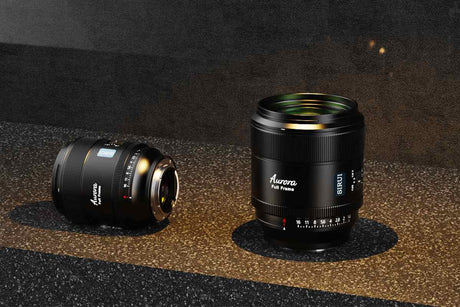Do you want sharp, detailed moon photos? In this detailed step-by-step guide, you will learn how to photograph the moon with the right settings, lenses, and timing with perfect contrast.
What makes moon photos difficult?
The biggest challenge is the brightness of the moon itself, which is very bright compared to the rest of the night sky. This makes it difficult to capture details of the moon, especially its craters, as the images often appear washed out. To get clear images, manual settings are often quite complicated and require a lot of skill.
How to photograph the moon?
1. Photograph at the right time
Most people think full moon is the best time for moon photos. However, this is wrong. At full moon, sunlight falls directly on the moon, washing out shadows and contrasts on the lush surface. The best time for moon photos is the first and last quarter of the moon, as most details of the moon become visible then and the shots are not overexposed.
Also try to take shots near the horizon. This way, you can stage the moon with trees, buildings, or even mountains, making the shots even more intense and interesting. The time before sunset and shortly after sunrise is also excellent for such shots.
2. The Moon-11 rule for camera settings.
The generally accepted rule for moon landscapes is that the camera lens should be set to f/11 and the shutter speed to 1/ISO. For example, if the shutter speed is 1/100 s, the ISO value should be 100. With these settings, your camera captures images that are not overexposed.
Always start with an aperture of 1/125 s and then adjust it according to the conditions. And very importantly: Always choose manual mode to have full control over all the variables of these shots. This becomes even more important when you need to manually optimize the images to get a sharper moon edge. Also avoid the automatic white balance function, as it leads to color shifts on the moon's surface.
3. Important Equipment for Moon Landscapes
Now you know how to properly photograph the moon. Focus now on the necessary equipment. For clear photos of our beloved moon, you first need a high-quality tripod with good stabilization and solid support. This is a must, yet many still focus only on their lens and camera and completely neglect their stability.
Look for tripods like the Peak Design Travel Tripod Carbon and the Benro Mach3 TMA38CL; both are excellent for this type of photography. If your camera does not offer stabilization, we recommend investing in a remote shutter release, which also minimizes shake.
Next, your camera body – at least for mid- to high-end cameras – should also perform well in low light and cover a wide dynamic range. You might consider cameras like the Fujifilm GFX100 II, the Panasonic Lumix S5IIX, or, if you have a limited budget, the Canon EOS R5 Mark II or the Sony A7R V. All these cameras offer plenty of performance for moon photography.
Next, you need a powerful camera lens, which is probably one of the most important pieces of equipment to pay attention to. Your lens should have a lower aperture between f/2.8 and f/4; this way, your aperture can compensate for as much light as possible. Additionally, you need a lens with good optics to ensure a high level of sharpness.
One such lens option for capturing moon landscapes is the SIRUI Saturn lens kit. It features a T2.9 aperture, which is sufficient to capture enough light for low-light shots. What makes this lens series special is the 1.6x cinema aspect ratio, which gives your moon landscape shots a more dramatic composition than a simple moon photo.
The optics of the lens are optimized to minimize chromatic aberration and focus breathing, so the final moon shots become sharper and more contrast-rich. The lens kit is available in various versions (35 mm, 50 mm, and 75 mm), allowing you to take both tighter and wider shots. A highly recommended lens for your camera gear to capture more beautiful moon landscapes.
Summary:
As we have already explained, when photographing the moon to get clear and detailed shots, your camera lens plays an important role. The SIRUI Saturn lens kit is a recommended option for further, richer, and sharper moon photos.





